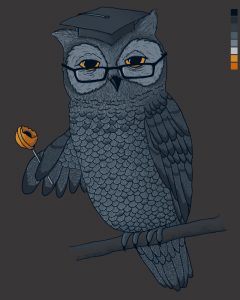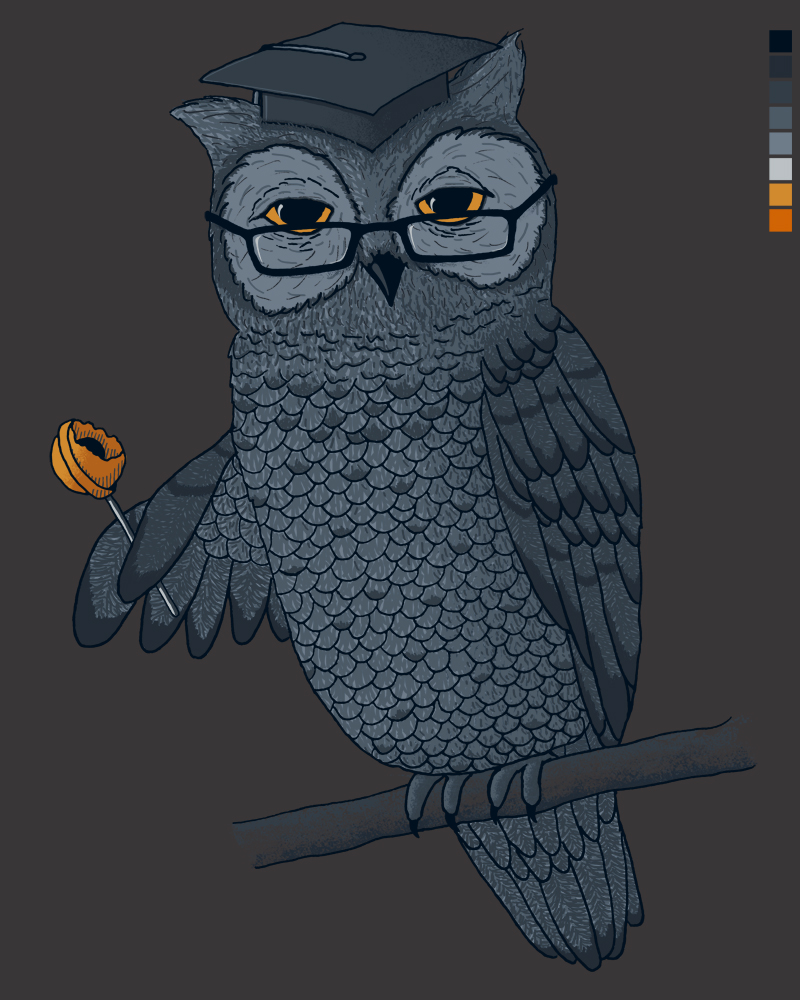 I’m sitting in my morning class, heavy eyes blurred with sleep, listening to the pleasant lecturing of my professor when I look up and see that an owl is teaching the class. One startled blink later, and my professor is back.
I’m sitting in my morning class, heavy eyes blurred with sleep, listening to the pleasant lecturing of my professor when I look up and see that an owl is teaching the class. One startled blink later, and my professor is back.
After blinking some more, I realize that there is more to the switch than just dreamy bleariness. This certain professor is a kindly, egg-shaped Humpty Dumpty of a man with a laid-back, tidy style. His sweater catches my eye: simple, knit, two-tone grey with a pattern of confused argyle on the front. Worn to the point of relaxed fit and sagging about the arms, it creates a draped, wing-like effect. Moving up from the sweater, my eyes jump immediately to a chin covered in a grey, circular goatee which lends a rounded effect to the rest of his features: round eyes, spectacles, forehead (extended and prominent due to a receding hairline). His jaw-line is lost in loose skin, probably having wandered off to wherever his neck is hiding, adding another dimension to his owly-looks. While his voice is fairly monotone, it is still pleasant, and the lack of range and steadiness lends its own comfort. The best is when he starts a question with ‘who’: “Who knows the answer to the following question in the text?”
I wander my way to my next class, thinking how I will never be able to look at this particular professor without transforming him into Owl from Winnie the Pooh, when the second shock of the day hits. My second professor is also an owl.
Whereas the first professor was stout and portly, this one is tall and lean. It’s the way he uses his height to peer at you that gives you a true sense of his owliness. He has a small, triangular downward-sloping nose, a bit beakish in aspect, accentuated by the creases that extend from each side of his nose to the corners of his mouth. As my bird watching skills increase, I note that his heavy eyebrows could be the tell-tale sign of the regal eagle owl, whose ear-like tufts and markings give a sense of a furrowed brow and accentuate the intense glare. This particular professor is another kindly owl though, so the impression I get is less of a bird of prey descending on poor students with talons outstretched. Rather, it is that of a wizened fowl preaching to us owlets sitting so much like ducks in a row.
I wonder, is there a special category of criteria for students applying for Masters and Doctorates that judges how owly they will age? Is there a certain check-list that favours the short-necked, the beak-nosed, the round-eyed? Is it a process of encouraging those phenotypes into the academic field (to create some visual conformity), or does one develop them with wisdom, age, and experience (one ages to look like one’s owly predecessors)? Is it merely the glasses, wrinkles, and greying hair, or is it really something more intrinsic? Perhaps I will pursue a Masters and do some research. My thesis can be: “Owls For Professors or Professors who Look like Owls: A Causal Relationship, or Merely Coincidental?


